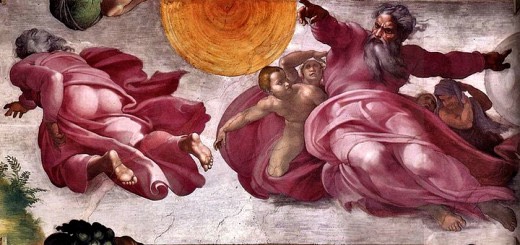The discarded stone has become angular stone (Ps 118, 22-23)
Reflections held by the theologian Elizabeth Green* to theEcumenical nCCTRO for "different Christians" Organized by the Gionata project at Casa Cares (Reggello) on April 12, 2008
"The stone that the manufacturers have discarded, has become corner stone, this is the wonderful work of the Lord»(Ps 118,22-23). This verse appears five times in the New Testament and three of these five times is located in the temple of Jerusalem. We find it in all three synoptic gospels, pronounced by Jesus at the end of the parable of the Vignauoli.
The parable, you remember it, tells of a man who plants a vineyard, rents it to winemakers and goes on the road. When there is time for the collection, it sends a servant to have the fruit. Not wanting to deliver the fruit of the vineyard to the master, the winemakers mistreat the servant who is postponed empty -handed. The master of the vineyard sends various servants who are however beaten and killed. In the end he decides to send his son convinced that the winemakers will have respect for him. "But those winemakers said among them 'this is the heir: come kill it and the inheritance will be ours". So they took it, They killed him and “threw it out of the vineyard"(Mc 12, 8)
At this point Jesus asks "So what will the master of the vineyard be? He will come, he will make those winemakers perish and give the vineyard to others. You have not also read this writing: the stone that the manufacturers have discarded has become corner stone; This was done by the Lord, and it is a wonderful thing in our eyes"(Mk 12,10). I mentioned Marco and although MT and LC report small variations all three agree on two fundamental elements for our theme.
Firstly, the parable completed with the quote of the psalm is told by Jesus in the temple. According to the chronology of the Synoptics to a certain moment of his ministry Jesus sets himself up for Jerusalem. First he enters the capital (the "triumphal" entrance - Palm Sunday), then enters the temple for "purify". After a short parenthesis, (the dry fig) returns to "walk in the temple"(Mk 11,27) where the final confrontation with the religious authorities the leaders of the priests, the scribes, the elderly, the Pharisees takes place in a series of episodes. Our psalm, therefore, is mentioned in a context strongly marked by the religious controversy that takes place in the temple.
Secondly, the intent of both the parable and the citation is clear, the religious authorities perfectly realize that Jesus is identifying them with the bad vineyards. "They tried to take it, but they were afraid of the crowd; because they understood that he had said that parable for them". If they are bad winemakers, it is not difficult to understand that the discarded stone can only be Jesus himself. This interpretation is confirmed by the fourth summons of our text in the book of documents.
The occasion is the healing of the lame and the preaching of Peter and the apostles in the temple. Questioned subsequently by the religious leaders, Pietro replies "is known to all of you and all the people of Israel that this has been made in the name of Jesus the Nazarene, which you have crucified, and that God has raised from the dead; It is for its virtue that this man appears healed in your presence. He is “the stone that was refused manufacturers from you and has become the corner stone"(Acts 4,10ss).
Our text, therefore, appears in a context of controversy against the religious leaders set in the temple. The path of Jesus from the outskirts of Galilee brought him the right to the central symbol of the religious power of Israel: the temple of Jerusalem. There the final confrontation with the religious authorities continues, a comparison that had characterized the process of Jesus until then (the observance of Saturday, the distinction between pure and impure, the forgiveness of sins and so on). All these controversies have to do with those who can be saved and how. In my reading "The Temple"As a symbol of the faith of Israel, it represents a religious vision based on the inclusion of some and the exclusion of others. In fact, while the temple welcomed the observant member of the people of Israel (male), it excluded or discarded a series of people who could not access it or accessed only in part: women, foreigners, people with physical malformations.
A good part of the religiosity represented by the temple was built on the same distinction between pure and impure and required a rigorous separate from all this and all those considered, for one reason or another impure. In fact, Jesus accuses the religious leaders of having moved away from the heart of the faith of Israel (the great commandment) before the integrity, salvation and liberation of men and women the observance of laws, precepts and traditions. It is no coincidence that Matteo completes this section with the "troubles" against the Pharisees (23 m).
That the temple was at the center of the controversy of Jesus is clear both from the accusations made to Jesus before the Sanhedrin ("We heard it while he said:"I will destroy this temple made by hands of man, and in three days I will reconstruct another one not made by hands of man"(Mk 14.58)) both by the insults that launched him when he was already on the cross“ andH, you who destroy the temple and reconstruct it in three days, save yourself and go down from the cross"(Mk 15,29). Furthermore, Jesus himself sitting in front of the temple said "See these big buildings? It will not be left stone on stone that is not diluted"(Mk 13,2).
Jesus, therefore, launches an attack on the temple, to the type of religiosity and power that was now represented and consequently is expelled. Indeed it is discarded. Identifying with and excluded (prostitutes, sinners and publicists) and siding on their side, he himself is excluded. In all three versions of the parable we read that "They took it, they kicked him out of the vineyard and killed him"(Mt 21,39).
After the comparison in the temple, Jesus will be arrested, tried, condemned and conducted outside to be crucified. In fact, Jesus is crucified outside the walls of Jerusalem, he and his proposals have been discarded and he dies together with the other waste of the world of that time.
At the end of the letter, Jewish agi reads "Also Jesus to sanctify the people with their own blood, suffered out of the dead of the city"And then add"We then go out of the camp and go to him bringing his object " (Ebr 13:12s). Jesus, therefore, is the discarded stone that has become corner stone, that is, the stone from which a new construction stands, a building, if we want a different temple to which we are all and all invited to be part of.
With this step we come to the fifth quote of our text. In 1 pt we read "By approaching him, living stone, rejected by men, but before God chosen and precious, you too as living stones are built to form a spiritual house, a holy priesthood to offer spiritual sacrifices welcome to God through Jesus Christ"(1 pet 2.4s.) We witness two transformations, first of all, the discarded stone is" living ". As we read in the documents, Jesus was crucified yes, but God raised him from the dead. The story of Jesus is not over but we call us, inviting us to “Bear on him ..".
Secondly, being, becoming a living stone, is not limited to Jesus but it is a possibility offered to everyone. Coming on the discarded stone that has become cornerstone, we also become of the living stones raw material from which God is building her home, her home, her body, her temple. "We are the temple of the living God"(2 Cor 6.16 See 1 Cor 3,16) Writes Paul while elsewhere we speak of the community of believers in Christ as"The building of God"To which we all contribute.
I hope that now the revolutionary amount of our text appears in all its strength. Let us remember that following Psalm 118 our verse was pronounced after entry to the temple. For Israel returned from exile, salvation always passed through the center. The discarded stone is rehabilitated but the journey that is made is always from the outskirts or from the margins to the center, from exile to the new temple in Jerusalem. As we have seen, salvation as a return to the center was ritualized by the psalm. With Jesus something completely new happens; The center (i.e. a religion based on the inclusion of some and the exclusion of others) represented by the temple is unhingeed, the discarded stone saves everyone inside and outside but never returns to the center and therefore does not produce (or should not produce) a proposal for faith (a church) that operates excluded.
It is time to sum up and ask us what it can mean for those who for one reason or another and above all because of their sexual orientation are excluded or welcomed only in part by the various centers that make up our world, particularly from the churches.
First, the message of liberation, hope and salvation codified in the psalm is a reality offered by God to all of us today. We can say more, as the history of the ancient Israel "shows"discarded stone", How much of Jesus, God has a weakness for" waste "produced by our" civilization ". God meets those who feel, as Ravasi says confined and blocked for one reason or another in a narrow place to free them from their anguish to give them salvation and integrity.
God is able to open the neighboring spaces not only by freeing ourselves from feeling of guilt, of inadequacy, of negativity but declaring us precious, making us living stones from which to build his home. The example that comes to mind are the women mentioned in Jesus' geneaology according to Matteo, women in one way or another discarded by the regime and by the patriarchal religion, women with a decidedly unconventional sexuality who actively contribute to the history of God with the world, Tamar, Raab, Rut and Betsabea.
Secondly, God frees us not on the basis of our waste condition but starting from his grace and mercy. It is true, God has a weakness for those made weak by our world but it is not our (eventual) condition of discarded to be a source of salvation. If it were, we would have done nothing but overturn a certain theology according to which to become Christians you have to become heterosexual! As it is not heterosexuality that makes us welcome before God, it is not even another sexuality! I don't know if we have to repeat it but we are justified by grace through faith. "You have been my salvation! ... this is the work of the Lord " The Psalmist says.
However, and thirdly, there is a condition to be followers of Jesus: "Those who do not bring their cross and do not come behind me cannot be my disciple"(Lk 14:27). As we have seen, the novelty of the proposal of Faith of Jesus is that it no longer passes through the center but sides on the side of the waste. Bring your cross to say Jesus follow out of the camp and make the periphery of their home.
In my opinion, one of our larger temptations is to want to reach the center, to be rehabilitated by the center! I would like to suggest that the way of Jesus is different, he offers us to make margins our home. Obviously, as Hooks says, there is a distinction between "marginality imposed by oppressive structures and marginality elected to place of resistance". But, when we, following in the footsteps of Jesus we elect the margins they become "space for possibilities and radical opening ... place of creativity and power, inclusive space, in which we find ourselves and we act with solidarity, to cancel the colonized/colonizer category" (p. 72).
Or we listen to Rigliano's proposal: "We have to advance a strong hypothesis here: homosexuality, in our social system of westerners of a tributary country is what is revealed as the failure of the dominant heterosexual system. We must be able to grasp the residual role of waste, while we advance the hypothesis of homosexuality as a possibility for everyone, next to others"(P. 91).
Without, I add, I, excluding whatsoever. The history of Jesus, understood as a discarded stone that has become the cornerstone, can become ours. It is an itinerary of liberation that no longer returns to the center represented by the temple and therefore does not continue to produce waste.
The journey of salvation goes precisely in the reverse direction, from the center or from our desire for the center to the margins, on the outside where Christ was crucified and where God still chooses to dwell today.
Finally, I believe it is not difficult to see how the ecclesiastical institutions to which we belong have difficulty not to produce the same logic represented by the temple, a logic that as we have seen produces the waste in itself. It is possible to imagine a church that did not do it by opting to make margins its space of salvation, and if yes, what role we could have, like living stones, in its construction
* Elizabeth E. Green is feminist theologian and pastora of the Italian Battista Evangelical Church. From silence to the word. Stories of women in the Bible (2007), The Gospel according to Paolo (2009), The betrayed thread. Twenty years of feminist theology (2011) and Our Father? God, gender, parenting. Some questions (2015).






